Chinese Food: Basic Overview
Common Ingredients
Common Cooking Methods
Courses
Meals
Key Taste
Eating Etiquette
Meal Presentation
Culinary Festivals
Influence and Fusion
Popular Types of Chinese Food
-
Dumplings
Chinese dumplings are usually steamed, though some varieties are boiled or fried.
There are filled and unfilled Chinese dumplings with wheat dough as the main ingredient.
Typical filling ingredients for Chinese dumplings include meat (especially pork), seafood, and shredded vegetables (like cabbage); the filling is usually spiced.
Chinese dumplings come in many shapes and sizes.
They can serve as dim sum dishes for breakfast, snacks, appetizers, and main dishes.
-
Snacks
Chinese snacks are diverse in taste and textures.
Many of them are popular street food and breakfast delights.
Both sweet and savory snacks are widely available.
Certain Chinese snacks are associated with traditional holidays and festivals.
-
Rice Dishes
Steamed rice is a staple food and traditional side dish in China.
Fried rice is a popular Chinese main dish and street food item.
-
Stir-fries
Stir-fries are a dish type invented by the Chinese.
Chinese stir-fries are meat-based, vegetable-based, or noodle-based
Their flavors vary from dish to dish, from light to savory or spicy.
-
Dry Noodle Dishes
Chinese dry noodle dishes are usually made with wheat-based noodles.
These dishes can be stir-fried with various ingredients (such as meat and vegetables) or served in a sauce.
-
Noodle Soups
Chinese noodle soups feature chewy noodles, meat, and vegetables in a savory broth.
These dishes are usually served hot as comfort food.
-
Soups
Savory soups are popular main dishes in Chinese cuisine.
These soups are typically made with protein-rich ingredients, vegetables, and various spices.
Sweet soups, based on fruits or rice snacks, are well-known Chinese desserts.
-
Cakes and Pastries
Chinese cakes and pastries include many types of baked goods that can serve as snacks and desserts.
Both Western-influenced and traditional pastries are popular in China.
-
Grilled and Barbecued Dishes
Most Chinese grilled and barbecued dishes are based on pork and poultry.
The meat is typically marinated in an aromatic spice mixture.
Certain dishes have a long history and sophisticated serving etiquette.
Chinese dishes are dishes that originated from China and have great significance in the country as well as overseas Chinese communities. Many of these dishes have a lengthy history and are vital to China’s social and cultural life.
Chinese cuisine is particularly fond of ingredients like rice, noodles, pork, soy sauce, and chili oil. Stir-frying, done with a wok and chopsticks, is among its most well-known cooking techniques.
The regionality in Chinese cooking is another noteworthy feature, with many local cooking traditions showcasing distinct qualities.
Interestingly, most Chinese dishes originated within the country, and foreign cuisines exercise no notable influence on local offerings.
Timeless Chinese dishes have influenced the global kitchen in many ways, like inspiring various renowned dishes in East Asia. They also create fusion cuisines in the Western world or introduce classic cooking ingredients and techniques to the rest of the world.
Read on, and I will introduce you to the basic features of traditional Chinese food, including its international fame and healthy aspects.
Then, you will discover 45 popular dishes in China. For each entry, I will describe important features like origin, ingredients, its role in a meal, serving suggestions, and, sometimes, the flavor profile of these delicacies.
Next, I will cover information about Chinese cuisine: the factors that make Chinese delights popular, its major regional cuisines, and local utensils.
Finally, I will mention suggestions for Chinese drink pairings, key points on the global influence of Chinese dishes, and must-known rules about how to enjoy dishes in China.
Here are 45 iconic Chinese dishes you need to know:
45 Most Popular Chinese Dishes with Filters
Scroll down and discover the best 45 dishes the rich cuisine of China has to offer. You can also filter my list according to alphabetical sorting, main ingredients, taste, cooking methods, dish types, courses, and global popularity.
The filter also helps you discover everything from cherished traditional meals and national favorites to exotic dishes and street eats.
Chinese Fried Rice
- Street Food
- Traditional
Chinese fried rice is a traditional rice dish that emerged during China’s Sui Dynasty. It consists of cooked rice stir-fried with eggs, vegetables, seafood, or meat in a wok or frying pan. Popular condiments include soy sauce, garlic, and cooking oil.
In China, regional adaptations like Yangzhou, Hokkien, and Sichuan variations utilize local ingredients to alter the flavor.
Within Greater China, Chinese fried rice is often used as the penultimate dish in Chinese banquets. Outside of China, fried rice is beloved across East Asian, Southeast Asian, and South Asian cuisines.
Kung Pao Chicken
- Traditional
Kung Pao chicken is a stir-fried Chinese specialty featuring vegetables, peanuts, and cubed chicken. Originating from the Sichuan province in the 19th century, Kung Pao chicken in China is a main course item with a spicy flavor achieved by using Sichuan peppercorns.
In the Sichuan Kung Pao, chicken is the main ingredient, enhanced with the flavor of Shaoxing wine, deep-fried peanuts, and Sichuan peppercorns for numbing spiciness.
In Guizhou, Kung Pao chicken comes with big and skin-on chicken cubes with skin. This version also requires flash-frying the chili before stir-frying other ingredients.
Chow Mein
- Street Food
- Traditional
Chow mein is a Chinese stir-fried noodle hailing from Guangdong. It is often paired with vegetables, sometimes meat (usually chicken, pork, beef, shrimp), or tofu. There are many approaches for frying the noodles to combine with the toppings.
In China, each region has its own way of adapting to chow mein, explaining why many Chinese restaurants often have chow mein as a main dish on their menus.
Besides China, chow mein is also common in Chinese communities in many countries like America, Australia, Canada, Central America, Canada, and more.
Wonton Noodles
- Traditional
Wonton noodles are a Chinese noodle soup that combines wonton and egg noodles in a savory broth. With a history that goes back to the Tang Dynasty, wonton noodles were named after the word húntún, meaning gratitude or barely filling your stomach.
Typical wonton noodles come with hot broths, but the delicacy is also available in the dry form with sauce. As for the wontons, locals fill these wrappers with prawn, pork, or chicken and spices.
In Guangzhou and Hong Kong, the wontons are usually filled with prawns and pork. The delicacy usually features smooth, thin noodles served in a light, brown soup. To prevent the noodles from overcooking, people often serve the noodles placed over a spoon in a bowl.
Dim Sum
- National
- Traditional
Dim sum is a popular Chinese specialty that consists of a wide range of small Cantonese delicacies served for brunch. It dates back to the Jin or Song Dynasty. The term dim sum also refers to food items that go well with tea.
There are numerous dim sum varieties, such as regular items, late-night snacks, weekly or holiday specials, and seasonal offerings.
The province of Guangdong has over one thousand dim sum items that no place in the country can compare to. Some say China has more or less two thousand dim sum items in total.
Most dim sum items come in a bun or dumpling form, but meat-based dim sum items like shumai or rolls like rice noodle rolls are also popular choices.
Besides savory dim sum, the sweet versions are also popular. They are often filled with ingredients like bean paste, custard, or fruits (like lychees and kumquats).
Peking Duck
- National
- Traditional
Peking duck is a traditional Chinese roasted duck dish created during the Imperial era in Beijing. It is renowned for its delicate, crispy skin and modest meat content.
To make Peking duck, specially bred ducks around 65 days old are seasoned and meticulously roasted within enclosed or hanging ovens.
Peking duck comes in various textures, with succulent meat and crisp skin. There are two distinct cooking styles: closed-oven and open-oven. These styles are distinguished by fuel, temperature, and roasting duration.
Locals often accompany Peking duck with spring onion, cucumber, sweet bean sauce, and pancakes, or occasionally pickled radish.
Traditionally, Peking duck is carved tableside and served in three stages. First, people enjoy the duck skin, followed by savory meat with pancakes and vegetables. Then, the chef cooks the carved duck meat in a flavorful broth or sauce or sauté it with seasoning.
Mapo Tofu
- Traditional
Mapo tofu is a famous spicy Chinese dish of Sichuan origin, with tofu, oily sauce, and fiery spiciness. Its sauce gets a vibrant red color from the douban, a mixture of chili paste with fermented broad beans.
Aside from tofu, the signature Sichuan spicy specialty also features minced meat (usually beef) with water chestnuts, wood ear mushrooms, onions, or vegetables. In other regions apart from Sichuan, the spiciness of mapo tofu is adjusted to suit the locals’ taste buds.
To enjoy mapo tofu, I suggest doing it the local way by pairing it with white rice and pouring the sauce over the rice to eat with the tofu.
Baozi
- Street Food
- Traditional
Baozi, or bao, is a famous steamed, yeast-leavened bun from China with a filling of meat or vegetables. It is a heartier variant of mantou, a type of Northern Chinese steamed bun with no filling.
Dabao and xiaobao are the two most popular baozi varieties in China. Dabao is a big bun of around 4 inches, while the small one (Xiaobao) is roughly 2 inches.
To enjoy baozi, locals serve them with vinegar or soy sauce with many other options like chili and garlic paste, sesame oil, infused oil, or coriander. The Chinese enjoy baozi as a convenient breakfast or snack item.
Xiaolongbao
- Traditional
Xiaolongbao is a Chinese steamed bun that comes in small sizes and is usually served at breakfast. Created in the Qing Dynasty, xiaolongbao has various meat fillings of pork, crab, or shrimp but always comes with a flavorful soup inside.
The shapes and sizes of these little buns vary between styles, like Shanghai, Changzhou, Tianjin, and Kaifeng.
Changzhou gave birth to the modern style of today’s xiaolongbao, featuring a thin wrap, while the Shanghai style has secret ingredients for the wrappers and fillings.
Tianjin xiaolongbao is the most well-known variant in northern China, while Kaifeng xiaolongbao is famous for its lantern-like look.
Despite the numerous variants, the buns of xiaolongbao tend to have raised flour that encases solid meat aspic before steaming.
Jiaozi
- Street Food
- Traditional
Jiaozi is a Chinese dumpling that is enjoyed during festivities like Chinese New Year. It consists of dough and a filling of meat and vegetables, with many cooking methods like boiling, steaming, frying, or deep-frying.
Jiaozi dumplings are named according to cooking styles: shuijiao (boiled), zhengjiao (steamed), jianjiao (pan-fried), guotie (pot-sticker), zhajiao (deep-fried), tangjiao (soup dumpling), or danjiao (egg dumplings). The fillings vary from chicken and pork to shrimp and mushrooms.
Similar to zongzi, the jiaozi folding technique has been passed on through generations. The iconic crescent shape, punctuated by its pinched-edge fold, is the noticeable feature of jiaozi.
Lo Mein
- Street Food
- Traditional
Lo mein is a Chinese noodle specialty from the Guangdong province. A popular main dish, lo mein, consists of thin noodles made of flour and egg that have an elastic texture. People serve lo mein with vegetables, meat, or seafood.
However, some variants also serve lo mein with wontons or only vegetables. As a direct translation, lo mein means “stirred noodles,” while lao mian is its Mandarin translation, meaning “to dredge” or “to scoop out of water.”
Spring Roll
- Street Food
- Traditional
Spring roll is a popular appetizer and dim sum item in China. Originally a seasonal dish associated with the Spring Festival, it has evolved into a popular snack enjoyed worldwide. There are two major spring roll varieties: fried and non-fried.
The traditional spring roll features a thin, flour-based wrapper that encases a spiced mix of meat (pork, chicken, or seafood) and shredded vegetables (cabbage, carrots, and bean sprouts). Deep-frying or pan-frying is utilized to cook this roll dish.
Non-fried spring rolls are larger and involve wrapping rice-based wrappers around a savory filling of cooked ingredients. Both spring roll versions require various dipping sauces.
Outside the Spring Festival, the Chinese also serve spring rolls at traditional festivities like the Qingming Festival and Cold Food Festival.
Hot and Sour Soup
- Traditional
Hot and sour soup is a Chinese dish of Sichuan origin, combining meats, vegetables, fungus, tofu, and blood. Also, the spiciness of white pepper and the tanginess of Zhenjiang vinegar create the signature profile of this soup.
Hot and sour soup is a meat-based specialty that goes well with day lily buds, wood ear fungus, bamboo shoots, and tofu, occasionally enriched by pork blood. Its flavor is different from egg drop soup, another popular Chinese staple known for its silky texture and mild flavor.
Beijing and Sichuan both claim to be the birthplace of hot and sour soup, with similar versions emerging in Henan province.
Beef Noodle Soup
- Street Food
- Traditional
Beef noodle soup is a popular food in China and many East and Southeast Asian countries. Its main ingredients are stewed or braised beef, beef broth, vegetables, and noodles. Western China offers more beef noodle varieties than the east side.
In mainland China, Lanzhou beef noodle soup is a favorite dish named after Lanzhou, the capital of Gansu. The Lanzhou beef noodles usually feature halal meat, clear broth, hand-pulled noodles, and chili oil.
Taiwanese beef noodle soup, sometimes called Sichuan beef noodle soup, comes with rich, spicy red-braised beef broth, thick noodles, and bok choy. Locals serve Taiwanese beef noodle soup with pickled mustard greens and chili oil.
Hot Pot
- National
- Traditional
Hot pot is a Chinese main course prepared by simmering various ingredients and broth with a heat source. Locals tend to accompany an array of meats, vegetables, mushrooms, tofu, and seafood.
Traditional Chinese hot pots are divided into Southern and Northern varieties with distinct characteristics.
Southern hot pot varieties have fiery, spicy broths like Chongqing’s numbing and tingling effect, while the North emphasizes simplicity and meats, often featuring mutton or instant-boiled mutton.
In Taiwan, hot pots are adorned with spicy shacha sauce and raw egg yolk. Taiwanese even have chili hot pots and a unique Lunar New Year’s Eve version. A standard Taiwanese hot pot has 5 inseparable colors: white, yellow, green, red, and black.
Beggar’s Chicken
- Traditional
Beggar’s chicken is a Chinese delicacy made by wrapping chicken in clay and lotus leaves, then slow-baking over low heat. The traditional preparation of this chicken dish sometimes takes up to six hours per portion.
Originally cooked in a clay pot, modern beggar’s chicken is prepared in dough, oven bags, ceramic pots, or convection ovens for safety. While many regions claim ownership of this dish, Hangzhou is widely regarded as the birthplace of beggar’s chicken.
Congee
- Traditional
Congee is a type of rice porridge in China consumed widely throughout East and Southeast Asia, with variations in flavor and ingredients.
In China, where congee is known as juk, bai zhou, or xi fan, there are many regional variants, such as the salt and ginger-infused Cantonese congee or the spicy Sichuan version.
Historically, congee was a go-to option during famine and temple gatherings. Nowadays, locals tend to pair congee with pickled vegetables, salted eggs, or fried dough.
In Taiwan, congee, known as xi fan or zhou, is commonly flavored with sweet potato, taro, century egg, pork, or milkfish and is a traditional breakfast or remedy for the sick.
Char Siu
- Street Food
Char siu is a Chinese barbecued pork dish from Guangdong. It is classified as siu mei (a type of roasted meat) that is used in noodles, stir-fries, and rice dishes.
To create the glaze layer and flavor, char siu calls for a mix of five-spice powder with honey for the glaze and red yeast rice for the traditional red color. Then, char siu is fork roasted, a technique that gives the dish the same name when translated into English.
The pork used for making char siu is usually boneless and skewered with long forks for roasting over a fire or in a covered oven. The Chinese often accompany char siu with starchy specialties like noodles, buns, or rice.
Century Eggs
- Exotic
- Traditional
Century eggs are a black or brown egg-based delicacy of Chinese origin. Any egg type of chicken, duck, or quail is suitable for making century eggs, with the preservation time stretching from weeks to months.
The essential elements for preserving century eggs are a combination of ash, clay, salt, rice, and quicklime (calcium oxide or burnt lime).
After the preservation process, the egg yolk has a gray or dark green color with a creamy profile and a strong ammonia smell. Meanwhile, the white has a jelly-like texture.
Nowadays, people make century eggs by soaking the eggs in a blend of salt, calcium hydroxide, and sodium carbonate for 10 days before preserving them for weeks.
Century eggs go well with black vinegar as a side dish. Some Chinese households even cut century eggs into small pieces to incorporate them into porridge or sometimes dim sum.
Zongzi
- Traditional
Zongzi is a Chinese sticky rice dumpling with glutinous rice wrapped in an array of leaves, resulting in various shapes and sizes that vary by region and custom.
Usually, people enjoy this traditional Chinese glutinous rice staple during the Duanwu Festival. Also known as the Dragon Boat Festival, this festival falls on the fifth day of the fifth month of the Chinese lunisolar calendar.
Bamboo, lotus, reed, maize, banana, canna, shell ginger, and pandan leaves are essential elements for creating zongzi. Within the leafy lies fillings made of red bean paste and tapioca, taro, jujubes, ham, salted duck egg, pork belly, shredded pork, or chicken.
The process of wrapping zongzi is a skill passed through generations. As for the cooking, people tend to steam or boil the dumplings.
There are many zongzi varieties, including Jiaxing zongzi, jia zong, Cantonese jung, and jianshui zong.
Red Braised Pork Belly
- Traditional
Red braised pork belly is a pork-based Chinese specialty. It is particularly popular in Hunan province, where the dish is known as Mao’s family-style red braised pork because it was Mao Zedong’s favorite dish.
Locals make red braised pork belly by cooking pork belly with soy sauce, sugar, spices, and wine until the meat becomes tender and glazed. Ideally, the rich pork flavors are perfect for complementing the sauce’s sweetness.
Often served with steamed rice and green vegetables, red braised pork belly is suitable for hard-boiled eggs or other vegetables that absorb the sauce.
Hainanese Chicken Rice
- Traditional
Hainanese chicken rice is a Chinese-originated delicacy of poached chicken and fragrant rice cooked in chicken broth, with chili, ginger, and soy sauce as the accompaniments. Many see Hainanese chicken rice as a traditional creation in Chinese cooking.
Originating from Hainan province in southern China, Hainanese chicken rice was based on a delicacy called Wenchang chicken and was later adopted by Hainanese immigrants in Southeast Asia, particularly in Singapore and Malaysia.
Hainanese chicken rice has various versions influenced by local cuisines and ingredients in countries like Vietnam, Thailand, and the Philippines.
Zhajiangmian
- Street Food
- Traditional
Zhajiangmian is a noodle dish in China adorned with zhajiang (a soybean-based sauce) and many delicious toppings.
In Beijing, zhajiangmian is a combo of sweet and savory with yellow soybean paste, tianmian sauce, diced pork, and white scallion. Locals also serve thick noodles with crunchy vegetables and a sesame oil dipping sauce.
Sichuan-style zhajiangmian embraces fiery spiciness with a watery sauce infused with doubanjiang and ground meat. Alternatively, the Northeast style comes with a darker, saltier taste with Dajiang sauce and ground meat.
The Cantonese version of zhajiangmian offers various flavors of slight sweetness, spice, and sourness. The Buddhist style zhajiangmian requires tofu and soybean paste for a vegetarian mix.
Chinese fried sauce noodles pair well with an array of vegetables and mushrooms. Interestingly, zhajiangmian is dubbed “Beijing bolognese” for its resemblance to the Italian dish.
Stinky Tofu
- Exotic
- Street Food
- Traditional
Stinky tofu is a tofu delicacy originating from China that comes with a potent smell. These strong flavor tofus are made by fermenting the cubes with brines, meat, and vegetables for a long time.
However, commercial stinky tofu only needs one to two days of marination to create the odor. There are no fixed ingredients to create the marinating mixture, though the traditional brine elements revolve around fermented milk, meat, and vegetables.
In terms of flavor, stinky tofu comes with a sour taste, a pungent aroma, and a touch of sweetness. Its color ranges from gray to black.
Most Chinese enjoy stinky tofu as it is, though many steam, stew, and deep-fry stinky tofu to enjoy with soy sauce or chili sauce.
In many Chinese regions, stinky tofu is a fan-favorite street food, with many newcomers describing the odor as similar to smelly feet.
Buddha Jumps Over the Wall
- Traditional
Buddha Jumps Over the Wall is a renowned specialty made of shark fin soup in China with ingredients like abalone, sea cucumber, scallops, chicken, ham, and herbs. It is a time-consuming dish, requiring one to two days to prepare.
The shark fin soup sparks controversy due to the use of endangered shark fin and abalone. Therefore, the modern adaptation of Buddha Jumps Over the Wall uses imitation shark fin and farmed abalone as more ethical alternatives.
The name Buddha Jumps Over the Wall reflects its irresistible aroma and flavor, suggesting that even Buddha would jump over the wall to taste the soup. One story attributes the name to a scholar whose cooking attracted a monk with its smell.
Lion’s Head Meatballs
- Traditional
Lion’s head meatballs are a part of Huaiyang cuisine from eastern China, consisting of large pork or beef meatballs stewed with vegetables. A traditional and popular main course or soup, lion’s head meatballs offer a rich, savory flavor with a soft, tender texture.
There are two lion’s head varieties: white (cooked with napa cabbage) and red (cooked with soy sauce and ingredients like bamboo shoots or tofu).
This type of Chinese meatball originated in Yangzhou and Zhenjiang and later spread to Shanghai. Its name came from its resemblance to the Chinese guardian lion’s head.
Youtiao
- Street Food
- Traditional
Youtiao is a long, golden-brown, deep-fried strip of wheat flour dough, popular in Chinese and other Asian cuisines.
Originating from Hainan province, youtiao was adapted by various regions, leading to different names and variations. Its popular alternative names are Chinese cruller or oil stick.
Typically eaten at breakfast with rice congee or soy milk, youtiao has a lightly salted, tearable texture. Locals usually enjoy youtiao in many ways since it’s high in carbohydrates and fat while being low in protein and fiber.
Biangbiang Noodles
- Traditional
Biangbiang noodles are distinct hand-crafted Chinese noodles characterized by their thick, long, belt-like form. Originating from Shaanxi cuisine, biangbiang noodles are among Shaanxi’s “eight curiosities.” The name “biangbiang” mimics the sound of noodle dough striking the work surface.
Initially consumed by laborers, biangbiang noodles have become a national favorite through social media’s fascination with their character: “Biangbiang” is among the most complicated Chinese characters to write.
The Chinese often top biangbiang noodles with herbs, vegetables, and Sichuan peppercorns.
Mooncake
- Traditional
Mooncake is a Chinese dessert that usually appears during the Mid-Autumn festival. Its most popular variation is a round pastry with a thick, sweet filling of lotus seed paste.
A mooncake’s filling often varies with lotus seed paste, sweet bean paste, jujube paste, fruits (like persimmon paste and pomelo peel), and mixed nuts. Its crust can be chewy, flaky, or tender. Most mooncakes have a salted duck egg yolk.
On the crust surface, people often imprint the cake with auspicious Chinese characters, like “harmony” or “longevity.” The mooncake is suitable for baking, steaming, or even frying.
For serving, people enjoy mooncakes in small wedges along with a sip of tea. Additionally, mooncakes are favorite gifts for relatives during the Mid-Autumn festival.
Buddha’s Delight
- Traditional
Buddha’s delight is a Chinese vegetarian creation having vegetables and ingredients gently simmered in a soy sauce-infused liquid. It is a traditional Chinese New Year favorite dish.
Buddha’s delight comes in many variants, defined by their ingredient compositions. While Luohan Zhai presents at least 10 elements, Luohan Quanzhai boasts 18, and Tian Suan Zhai possesses sweet and sour components.
Since Buddhist cooking is about vegetarianism, Buddha’s delight doesn’t use eggs, dairy, alliums, and certain vegetables considered impure in this tradition.
Fa Gao
- Traditional
Fa gao is a Chinese steamed pastry made by the Hakka people. With its charming split top, fa gao is often reminiscent of a flower’s bloom. Crafted from flour, leavening, and sugar, its batter ferments before steaming, resulting in the signature cracked appearance.
Fa gao is often available in various hues like white, pink, or brown and serves as an embodiment of prosperity and fortune during festivities.
Mantou
- Traditional
Mantou is a soft and white steamed bun from China crafted from wheat flour and water. It is popular throughout the country, with many different versions of varying shapes and sizes.
A regular mantou is around 1.6 inches, with some giant varieties being able to reach 5.9 inches. Northern Chinese people consider mantou to be one of the main starchy food sources, along with wheat noodles and bing (wheat flour-based Chinese bread or cakes).
Feel free to enjoy mantou on its own, prepare it with ingredients like brown sugar or food coloring, or even mold it into various shapes for special occasions. Frozen mantou buns are also available at supermarkets and are fit for steaming or microwaving.
Chinese Sausage
- Traditional
Chinese sausage is a diverse category encompassing various sausages with distinct flavors, ingredients, and preparation methods.
Lap cheong, hailing from Cantonese cuisine, is the most common Chinese sausage type. Its flavor is a blend of dried, sweetened, and smoked pork and pork fat.
Other Chinese sausage versions are yun chang (made with duck liver), xiang chang (made with unrendered pork fast), nuomi chang (with glutinous rice in the mix), xue chang (with blood as the main ingredient), and bairouxue chang (with blood and chopped meat).
Hongchang is a smoked savory red sausage from Harbin. It is a regional delight with a coarsely ground texture and distinctive “European” flavors that are similar to Polish or Lithuanian sausages.
People often buy Chinese sausage in traditional unpackaged forms in street markets or wet markets. Many dishes feature this meat-based food, like fried rice and sticky rice.
Tong Sui
- Traditional
Tong sui, literally “sugar water,” is a category of classic Chinese sweet soup and custard desserts available in various tastes and textures. Hailing from Cantonese cuisine, many tong sui dishes are popular at dim sum restaurants.
Renowned tong sui varieties are tangyuan (glutinous rice balls in hot broth), black sesame soup, douhua (soybean pudding), sago soup, sweet potato soup, and tortoise jelly.
The main ingredients in tong sui vary widely, with beans, lotus seeds, fruits (namely jujubes, goji berries, and longans), tapioca pearls, tubers (like sweet potatoes), and rock sugar as popular choices.
Tea Egg
- Street Food
- Traditional
Tea egg, or marble egg, is a famous Chinese egg delicacy and snack. People create it by making soft-boiled eggs, cracking them a little, then simmering them in a spiced tea mixture. The spice mix often includes cinnamon, star anise, fennel seeds, Sichuan pepper, and cloves.
After simmering, tea eggs steeped in the spiced marinade for several hours. Successfully prepared tea eggs come with darkened lines running over the white.
There’s a quicker method for making tea eggs: steep peeled, hard-boiled eggs in a spiced tea mixture at low heat for the flavor to soak in the eggs faster.
In China, tea eggs are a favorite snack that is available at night markets, street vendors, and restaurants. Taiwanese people consume approximately 40 million tea eggs each year.
Sweet And Sour Pork
- Traditional
Sweet and sour pork is a common Chinese stir-fried dish hailing from Cantonese culinary traditions. It offers a rich blend of sweetness and tanginess.
The main ingredients of sweet and sour pork include marinated bite-sized pork pieces, optional vegetables (like bell peppers and onions), and a sauce based on vinegar, soy sauce, pineapple juice, cornstarch, and spices.
Sweet and sour pork is a convenient and versatile dish to pair with steamed rice and various Chinese sides, like stir-fried vegetables or noodles.
Dragon’s Beard Candy
- Traditional
Dragon’s beard candy is a Chinese sweet treat dating back to the Han Dynasty. It features fine, silky threads made from sugar and maltose syrup. These thin strands are stretched and wrapped around fillings like nuts or sesame seeds.
Dragon’s beard candy is often crafted by street vendors in front of their customers. This Chinese treat is similar to Western cotton candy but has a much lower sugar content (19% vs. 94%).
However, dragon’s beard candy is sensitive to moisture and heat and requires immediate consumption.
Sweetheart Cake
- Traditional
Sweetheart cake, also known as wife cake or marriage pie, is a time-honored Chinese pastry hailing from Guangdong. There are several legends surrounding its origin, but most involve a devoted husband dedicating the pastry to his separated wife.
Each sweetheart cake is composed of a flaky crust and a soft filling of candied winter melon, almond paste, and sesame. The crust is typically glazed with egg wash to create a golden crust.
However, many sweetheart cake variations swap lard for butter and add different fillings like coconut, vanilla, or almond.
Sweetheart cakes of Yuen Long town in Hong Kong are a specialty that comes with a mild sweetness and fragrant aroma.
Sweetheart cakes are easily confused with husband cake, with the only difference being the use of star anise in the filling for husband cake.
Tanghulu
- National
- Street Food
- Traditional
Tanghulu is a Northern Chinese snack with fruits like Chinese hawthorn, strawberries, or grapes coated with rock sugar on a bamboo skewer. It offers a sweet and sour taste and a crunchy texture.
Sometimes, the Chinese fill hawthorn with red bean paste and dip it in sugar syrup to serve as a popular street food, especially in winter.
Osmanthus Cake
- Traditional
Osmanthus cake is a Chinese pastry hailing from Xindu, a county-level city in Sichuan province. The main ingredients of this soft and sweet cake are glutinous rice flour, the flowers of sweet osmanthus (a plant native to many parts of China), and rock sugar.
Osmanthus cakes originated in the Ming Dynasty. Its creator is a peddler who was inspired by a folk tale about a poet dreaming of visiting the moon. He made the osmanthus cake using oils from osmanthus flowers.
Aiwowo
- Traditional
Aiwowo is a soft and chewy dessert from Beijing, China. Originating from the Hui people, it consists of balls of sticky rice with fillings such as sugar, sesame, apricots, melon seeds, plums, and haws.
Dating back to the Ming dynasty, the traditional Hui treat that looks like snowballs was allegedly created in secret for the Fragrant Concubine of the Qianlong Emperor.
Cong You Bing
- Street Food
- Traditional
Cong you bing is a well-known Chinese pancake filled with scallions. It is made by pan-frying for a crispy and chewy creation with many layers. This type of pancake is a favorite street food and restaurant dish in China.
Cong you bing is easily customizable by simply replacing the scallions with sesame seeds, fennel greens, or garlic chives. Many Asian supermarkets offer fresh or frozen cong you bing.
Stir-Fried Tomato And Scrambled Egg
- Traditional
Stir-fried tomato and scrambled egg is a simple yet popular Chinese dish. It was created during the late Qing Dynasty when tomatoes became a popular vegetable in China.
This Chinese stir-fried dish offers the richness of eggs, the tanginess of tomatoes, and the heat of chili peppers and other spices.
Nowadays, stir-fried tomato and scrambled egg is widely sold at cafeterias as a lunch dish to serve with rice.
Snake Soup
- Exotic
- Traditional
Snake soup is a Chinese soup or stew with roots in Cantonese cuisine. It is usually made with the meat of at least two different snake species, spices, and herbs like chrysanthemum leaves.
The history of snake soup dates back to ancient times. There are Chinese folk beliefs that this type of soup has great health benefits, like prolonging life span.
Snake soup is typically served at specialized shops. Flavor-wise, the snake meat tastes like chicken, with the added warmth and sourness of spices and herbs.
Chinese Pickle
- Traditional
Chinese pickle refers to an array of vegetables or fruits undergoing fermentation or marination with elements like salt, brine, soy sauce, or bean pastes. There are over 130 distinct Chinese pickles.
Traditional Chinese pickles balance the sweet, sour, pungent, salt, bitter, and savory flavors, with some having a spicy kick of Sichuan pepper. Aside from serving as an appetizer, Chinese pickles are suitable as side dishes or cooking ingredients.
The Chinese employ various methods of making Chinese pickles, from salting and fermenting to drying and spice infusion. Some versions even use Chinese wine in the fermenting mixture.
Like other popular Chinese dishes, Chinese pickles boast an interesting flavor profile and multiple culinary applications.
List of Chinese Dishes
What Makes Chinese Dishes Popular?
Rich History
Chinese cuisine underwent great changes under the two Han dynasties (206 BC-220 AD). Many Chinese cultural foods, like dumplings and various noodle dishes, were created during the period.
Another important event was the arrival of New World food ingredients in the 16th and 17th centuries. That was as impactful as how modern times have brought global influences to Chinese cuisine.
To sum up, Chinese dishes result from various historical and cultural trends. The latter is evident in the relationships between time-honored Chinese dishes and festivals.
Associations With Traditional Festivals
Chinese dishes are a must at various local festivals because of the roles they play in these festivals due to their long history and cultural relevance. Many age-old festivals in China require the preparation of classic dishes with symbolic meanings.
For example, mooncakes are served at the Mid-Autumn Festival reunion and togetherness, while dumplings are a must-have Chinese dish at the Lunar New Year since they stand for wealth and prosperity.
Street Food Scene
Chinese street food dishes are a beloved facet of Chinese cuisine because of their deep historical roots, affordability, convenience, and diversity of flavors.
Since the Tang dynasty (618 – 906), inexpensive and convenient street food has entertained countless generations of China. Mainstream street foods in China are available in many flavors, from sweet and savory to spicy and greasy.
Like the main dishes, street food dishes are influenced by Chinese regional cuisines, so try them if you want an easy way to dig deeper into the regionality of this country’s cooking.
What Is The Influence of Chinese Regional Cuisines on Chinese Dishes?
Chinese regional cuisines, which are the local cuisines of China’s different provinces and prefectures, dictate the main features of classic Chinese dishes: flavors, preparation manner, main ingredients, food presentation, etc.
The 4 major Chinese regional cuisines are Sichuan, Shandong, Huaiyang (Jiangsu), and Guangdong cuisines. There are 4 other influential regional cuisines: Zhejiang, Fujian, Anhui, and Hunan cuisines.
These 8 regional cuisines have an overwhelming effect on other regional cuisines as well as all Chinese dishes. As a result, there aren’t many fusion dishes or dishes of foreign origin in China.
Below is an overview of the 8 most important Chinese regional cuisines.
When experiencing these regional cuisines, you can find many exquisite Chinese dishes prepared with staple Chinese dishes.
Next, let’s look at how Chinese people use different utensils in preparing their popular dishes.
What Are The Most Common Cooking Utensils for Dishes In China?
Below are 8 typical cooking utensils that Chinese people use to prepare dishes for everyday meals.
What Drinks to Pair With Chinese Dishes?
Among the many Chinese beverage options that can accompany dishes, Chinese tea stands out, though other drinks are also suitable. Below are 7 spectacular Chinese beverages to pair with Chinese dishes:
How Do Chinese Dishes Affect Global Cuisine?
The ingredients, cooking techniques, and recipes of Chinese dishes exert an enormous effect on global cuisine, from Western to Asian countries.
Influence on Western Cuisines
The influence of Chinese dishes on Western dishes is substantial, both in the delicacies of the Americas and European gastronomic delights. Many hybrid cuisines are born from Chinese inspirations.
Some examples are American Chinese cuisine, Caribbean Chinese cuisine, and British Chinese cuisine. However, the effects of Chinese dishes on Asian cuisine are even stronger.
Influence on Asian Cuisines
Chinese dishes have long had a significant impact on the cooking traditions of many Asian countries.
Culinary knowledge from China has defined dishes in Asia, especially Southeast Asia (like Vietnam, Thailand, Singapore, the Philippines, etc.), Korea, and even Japan.
To enjoy Chinese dishes properly, understanding the do’s and don’t is important. Check out the next part to learn the most helpful facts.
What is Chinese Eating Etiquette?
In Chinese culture, essential table manners consist of the following rules.
Seating and Serving Arrangement
The most honored position typically faces the door and is reserved for the eldest or most distinguished guest. The host usually sits opposite the honored guest. The eldest or honored members are also served first.
Using Chopsticks
Chopsticks are the primary utensils in China. There are many taboos with this utensil, such as pointing and piercing food with chopsticks, sticking chopsticks upright in a bowl of rice, or passing food between chopsticks.
Communal Dining
Chinese meals are often communal, with shared dishes placed in the center of the table. It’s polite to take food from the dishes nearest to you and avoid reaching across the table.
People often serve other people before themselves. In more formal settings, the host may serve guests.
Noise Level
Unlike in some cultures, making noise while eating, like slurping soup, is often acceptable in China, showing signs that you are enjoying the meal.
Finishing Food
Leaving a little food on your plate indicates that you are satisfied and that the host has provided enough food. However, in some settings, finishing all your food shows appreciation for the meal.
Paying the Bill
The host or inviter typically pays for the meal, though offering to pay or share the cost is a polite gesture.
Do you find this post on Chinese dishes informative? If so, like and share it with your friends!



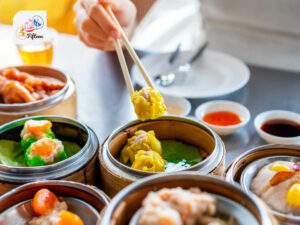
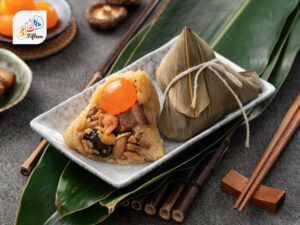
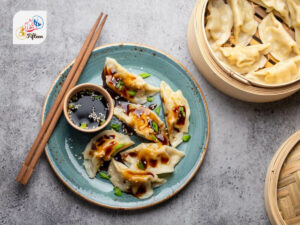
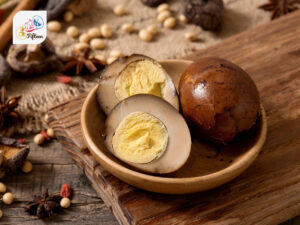
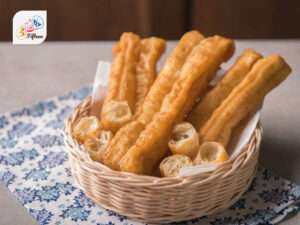
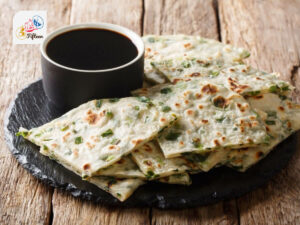
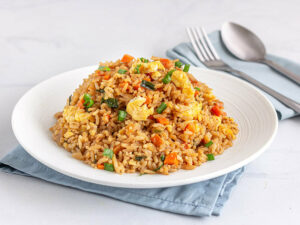
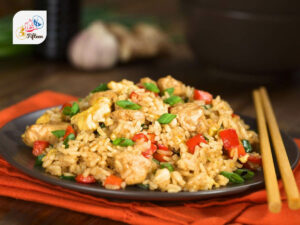
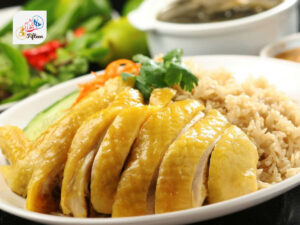
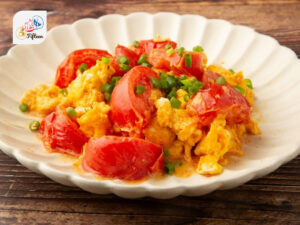
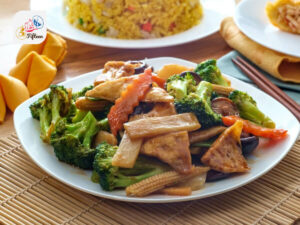
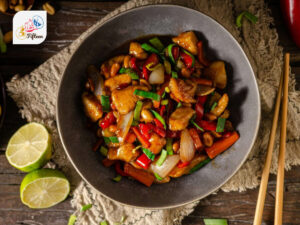
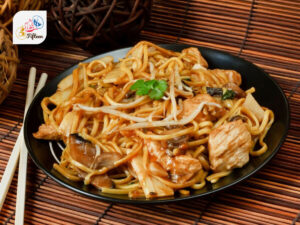
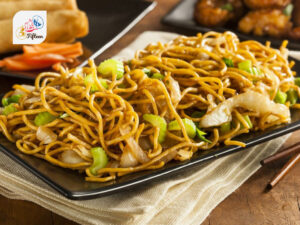
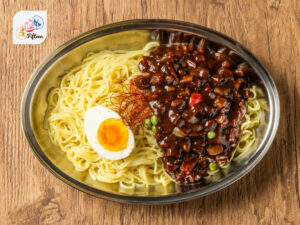
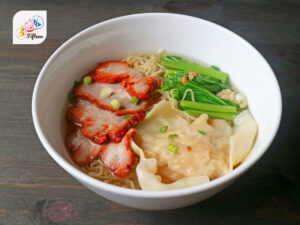
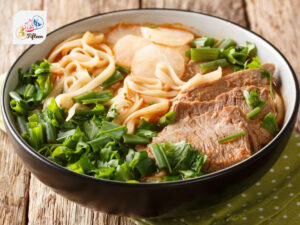
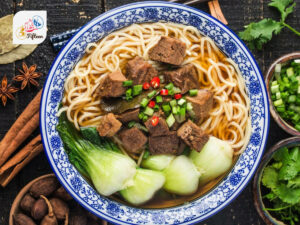
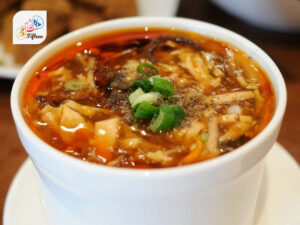
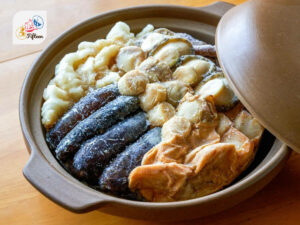
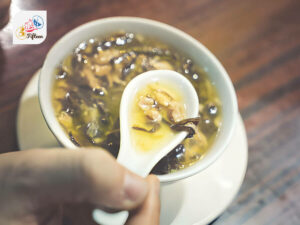
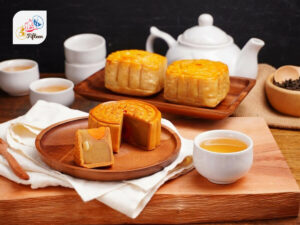

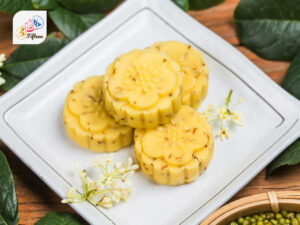
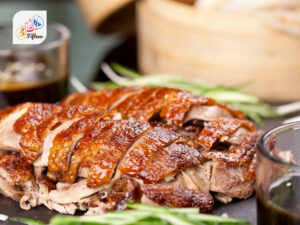

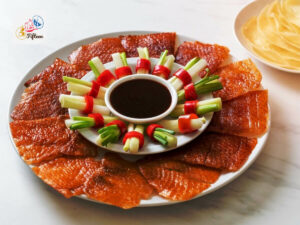
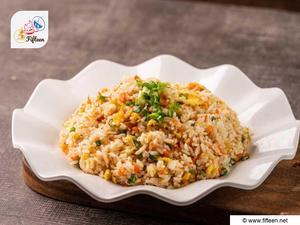
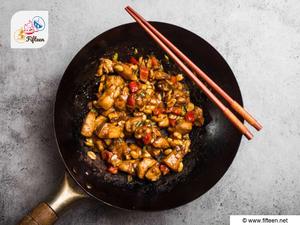
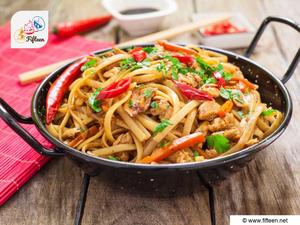
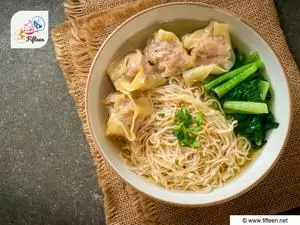
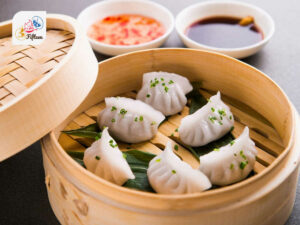
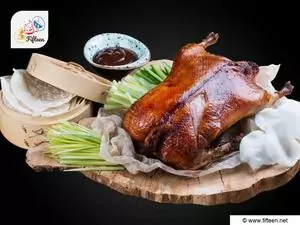
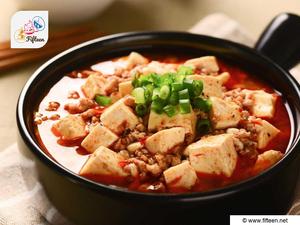
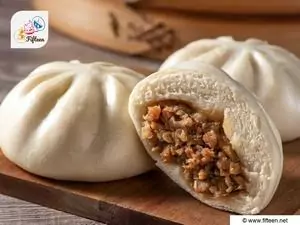
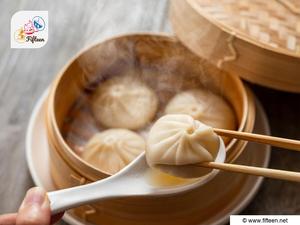
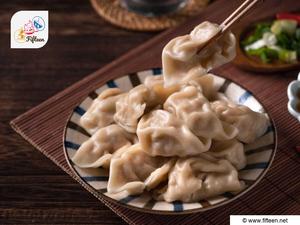
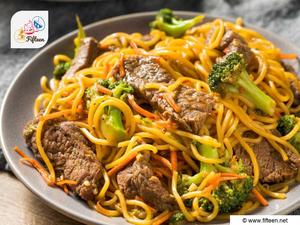
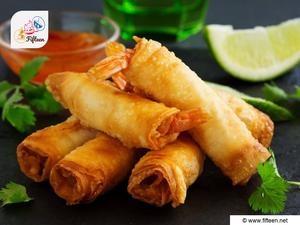
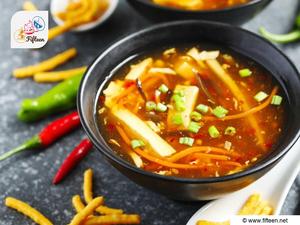
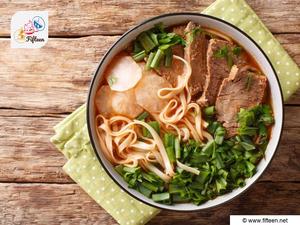
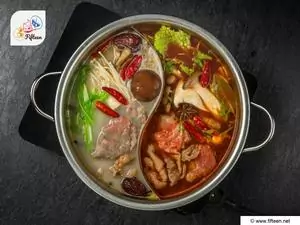
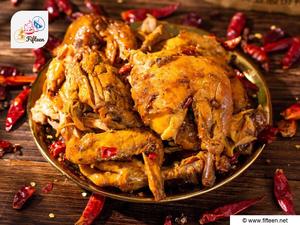
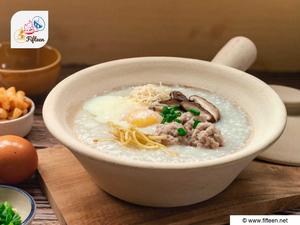
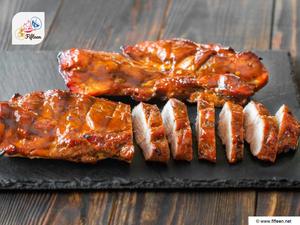
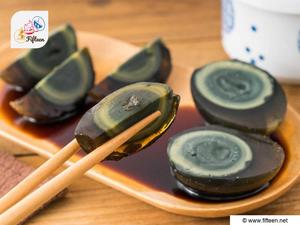
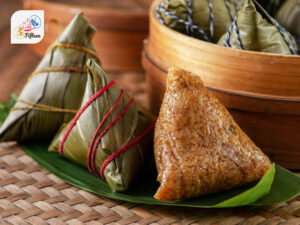
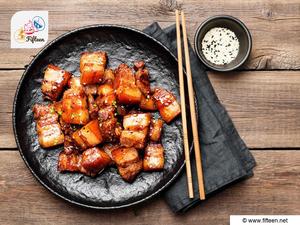
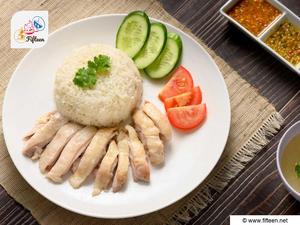
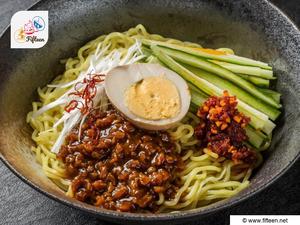
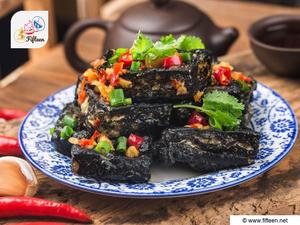
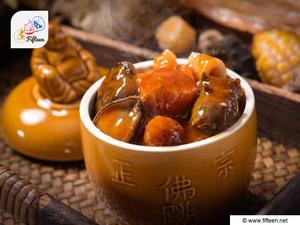
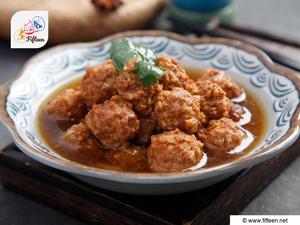
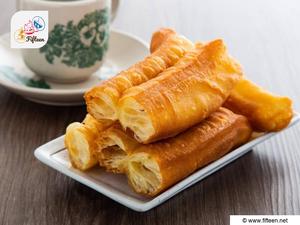
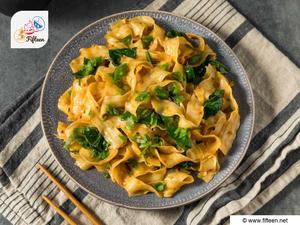
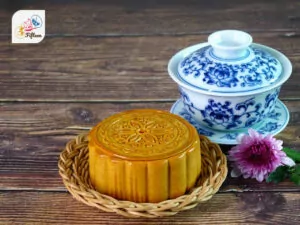
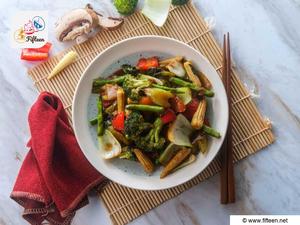
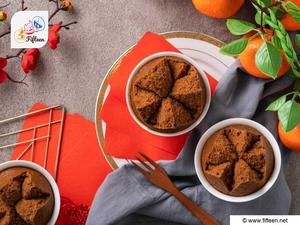
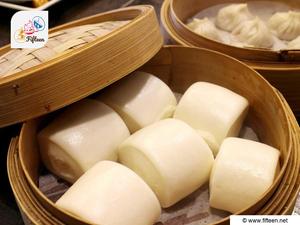
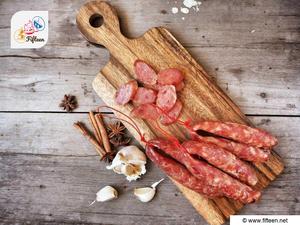
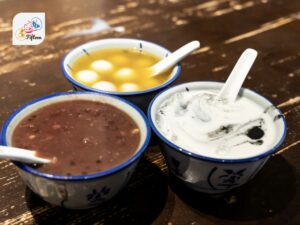
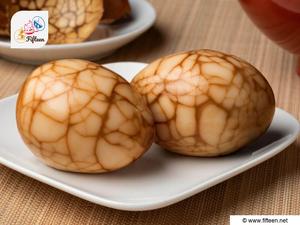
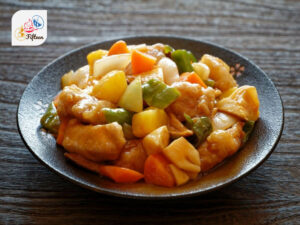
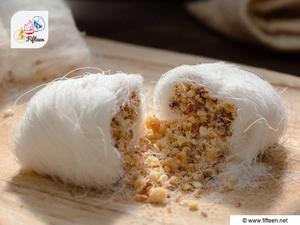
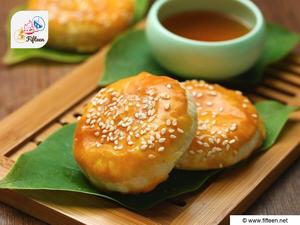

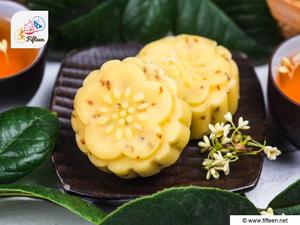
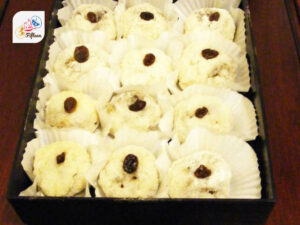
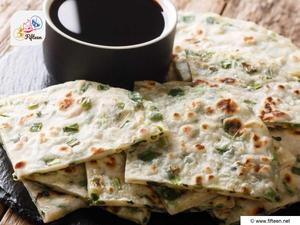
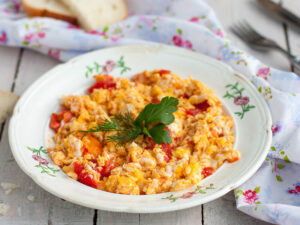
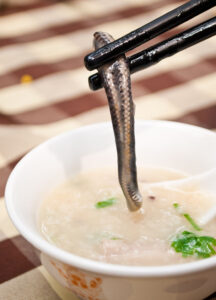
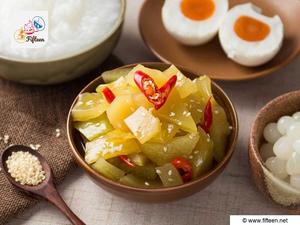
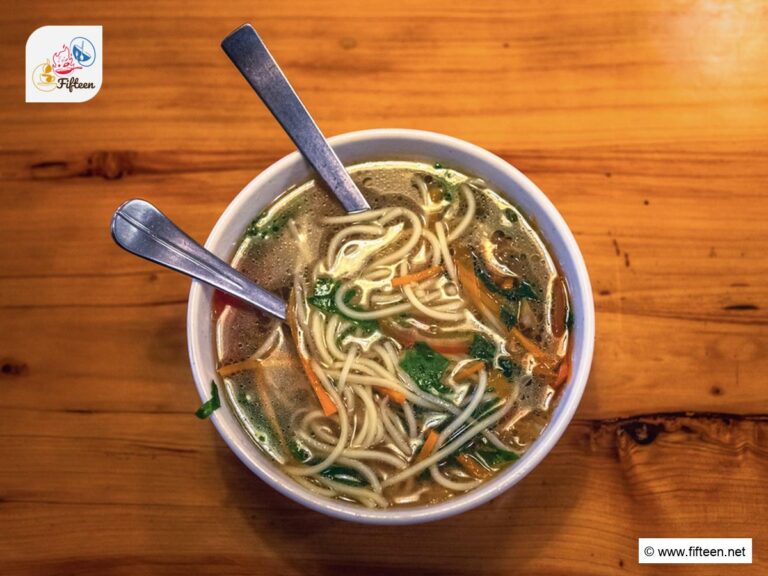
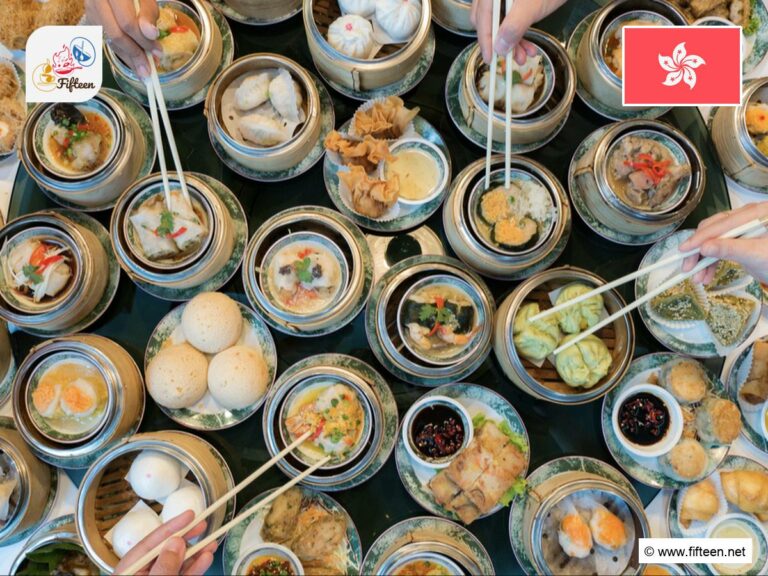
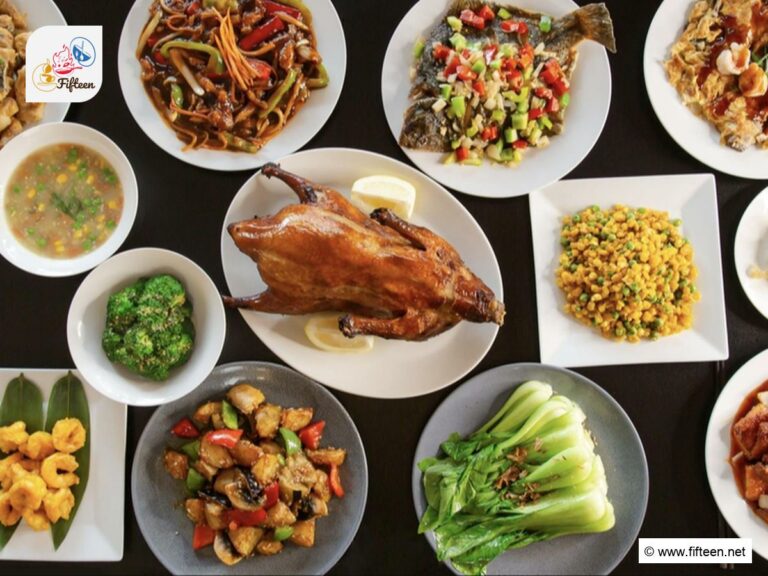
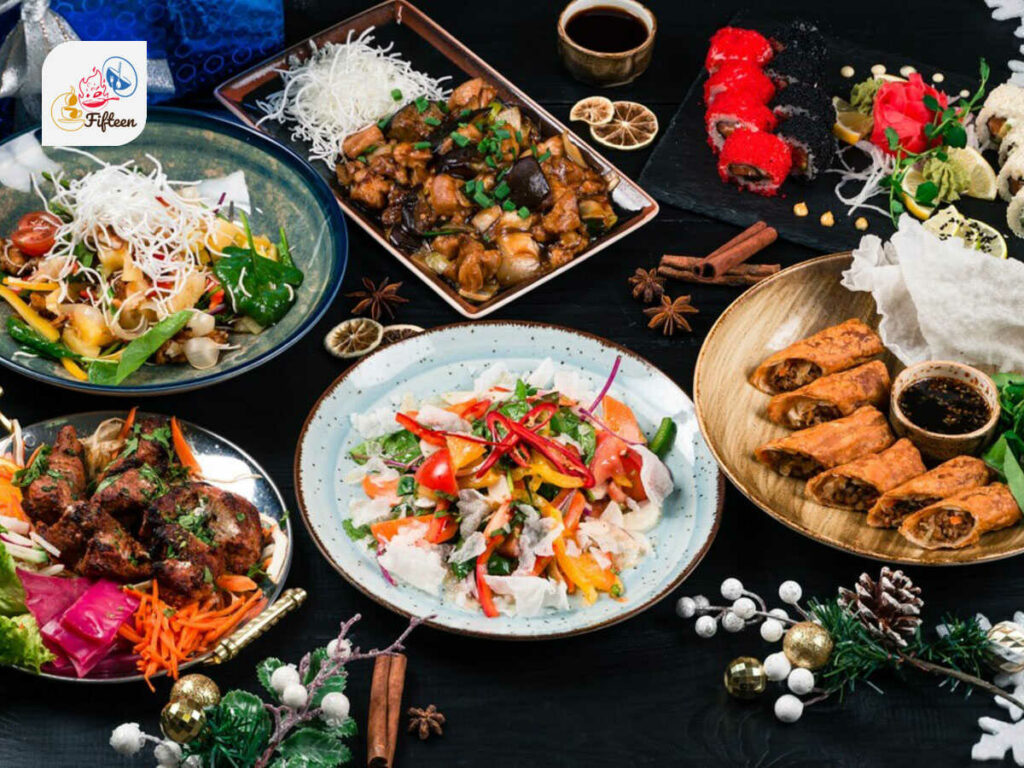
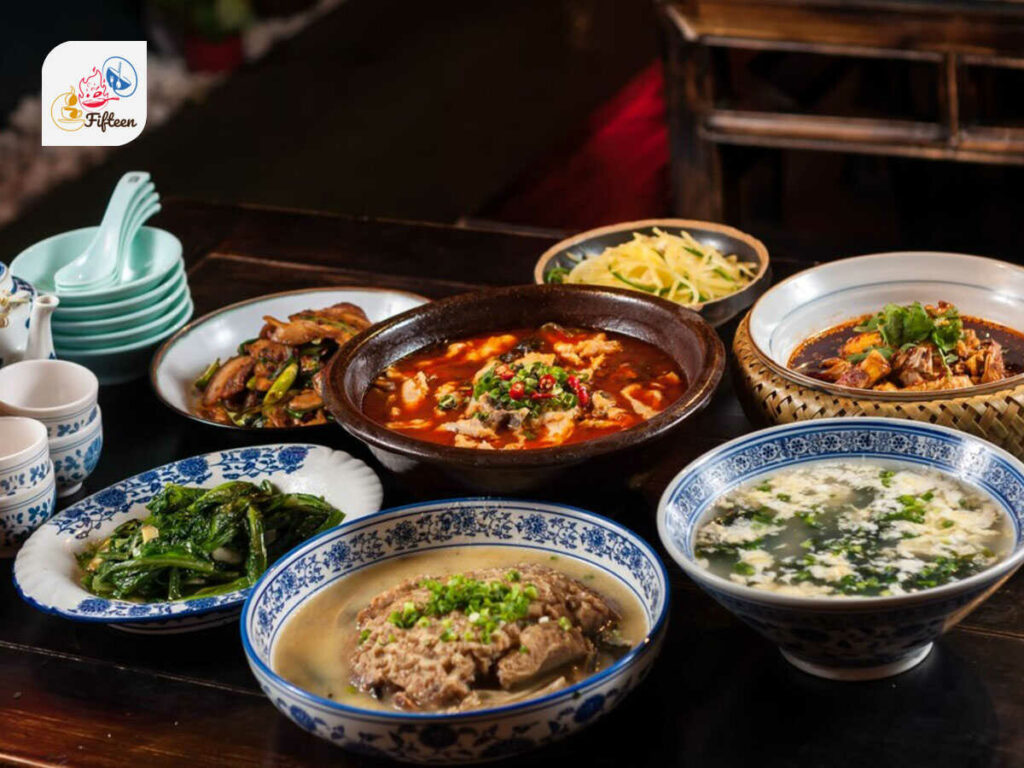
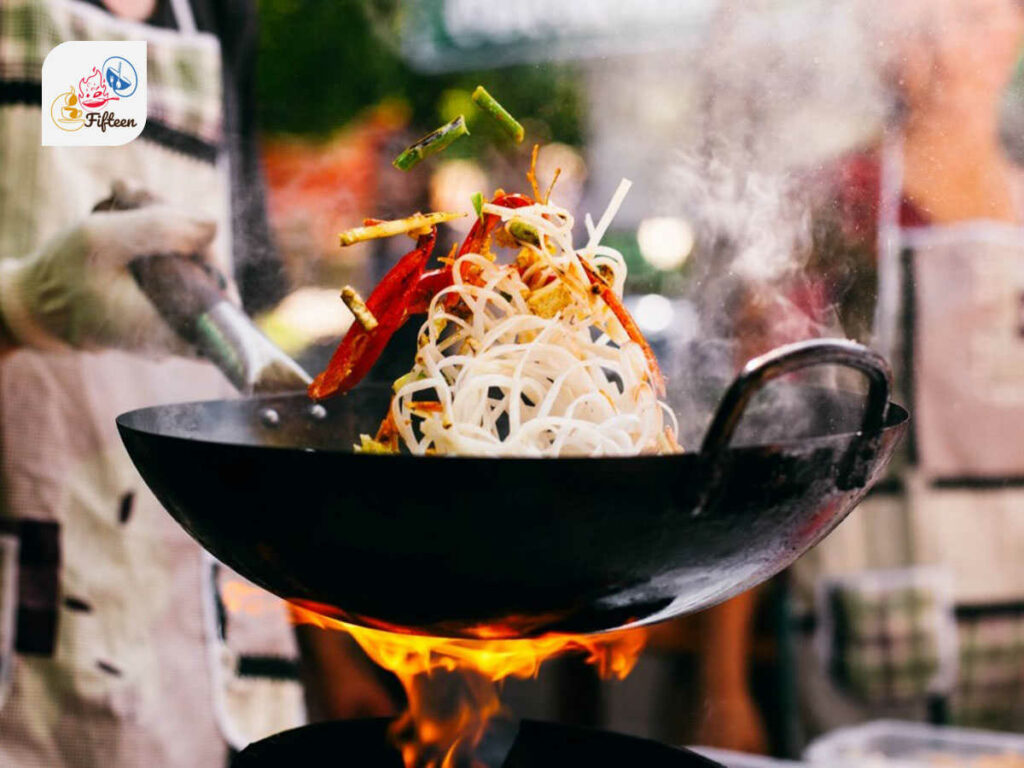
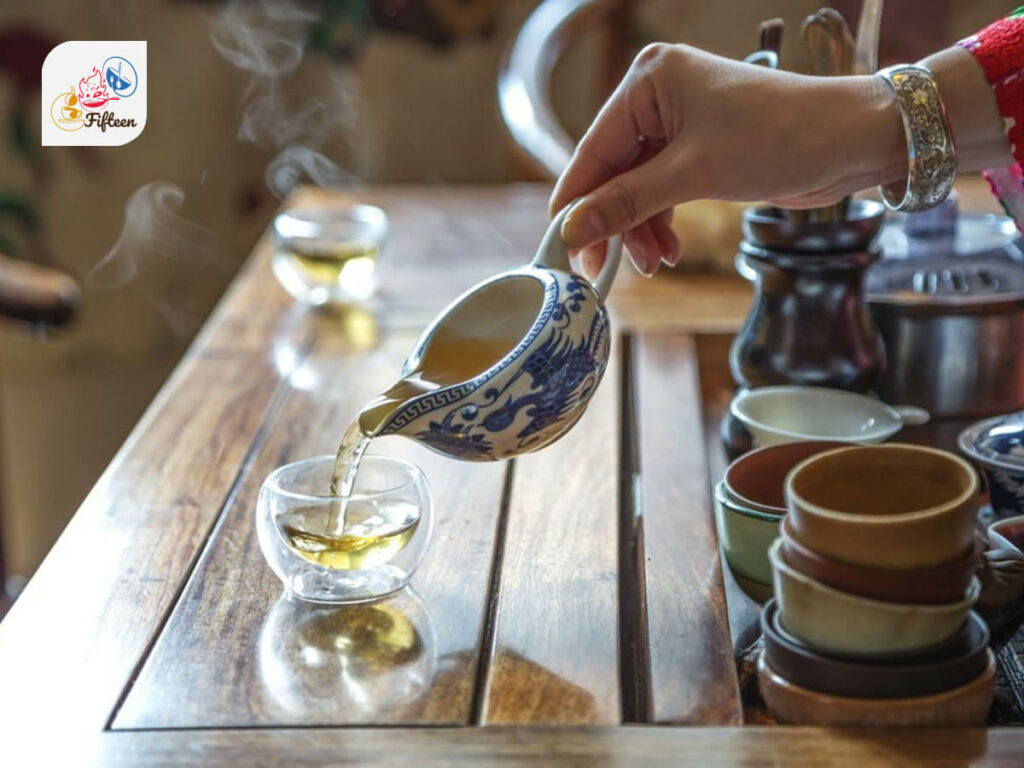
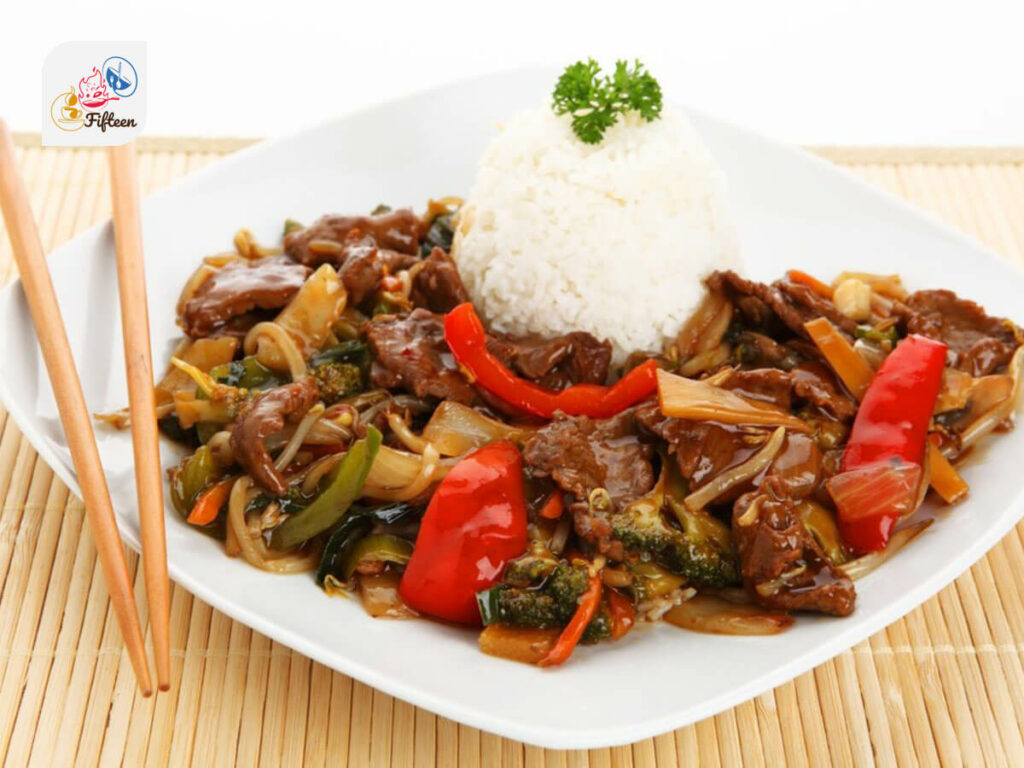
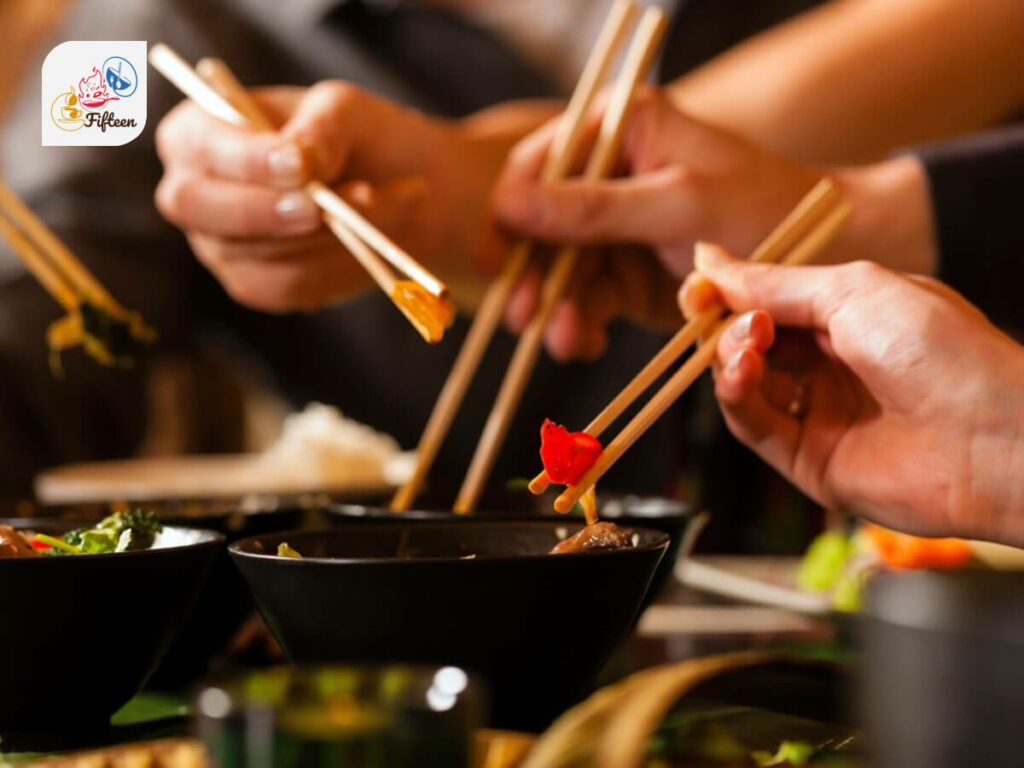
Jamie Scott
Editor in Chief, Senior Content Writer
Expertise
Home Cooking, Meal Planning, Recipe Development, Baking and Pastry, Food Editor, Cooking-video Maker, Western Food Evaluation Expert
Education
Le Cordon Bleu College of Culinary Arts
Local Community College, New York, NY
Jamie Scott is a skilled culinary expert and content creator specializing in Western cuisine. With over 15 years in the culinary field and formal training from Le Cordon Bleu, Paris, Jamie deeply understands how to blend nutrition with delicious flavors. His passion for cooking matches his commitment to making healthy eating accessible and enjoyable.
On Fifteen.net, Jamie brings a fresh perspective to classic dishes and beverages, offering readers insightful recipes, cooking tips, and a fresh view on meal planning that emphasizes taste, health, and simplicity.